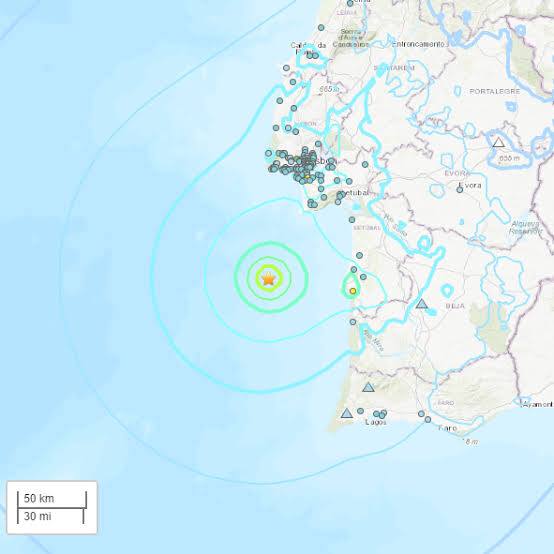
On October 22, 2024, a powerful 5.4-magnitude earthquake struck southern Portugal, shaking the region and triggering widespread panic, particularly in Lisbon, the country’s capital. The quake, which originated off the coast about 10 miles below the seabed, was strong enough to wake residents in the early hours and cause many to rush outdoors in fear of aftershocks. Tremors were felt across Lisbon and other surrounding areas, with reports extending as far as Morocco, where minor shaking was also detected.
Residents in Lisbon took to social media to describe the experience. Many reported significant tremors that lasted for several seconds, startling people from their sleep. “It felt like the building was sinking,” one resident shared, while others captured their reactions in real-time videos that have since gone viral online. There was no immediate tsunami threat, and local authorities confirmed that despite the powerful shaking, no serious structural damage or casualties had been reported.
This event marks the strongest earthquake to hit Portugal since 2009, which saw a 5.6-magnitude quake. While Portugal is not frequently associated with major earthquakes, it lies within an active seismic zone, and smaller tremors are not uncommon. This quake has revived discussions about earthquake preparedness in the country, with officials urging citizens to ensure they know safety procedures in the event of future quakes.
Historically, Portugal has experienced devastating seismic activity, most notably the 1755 Lisbon earthquake, which claimed tens of thousands of lives. While today’s building standards are significantly more robust, the recent quake serves as a reminder of the region’s vulnerability to natural disasters.




